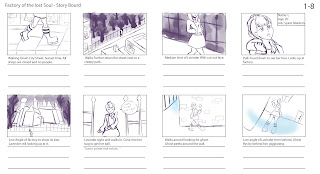For the first Prototype of our game, I wanted to concentrate on getting the basic game macanices in. The first one being getting the point and click movement working. To do this I set up a nav-mesh and some basic walls so I would see how the walk-able and non walk-able functions work. I then made a script that finds the location of the mouse when it clinks on the walkable mesh. It then takes the player and transforms their position to that point.

I then wanted to get some rotating doors in the game. I set up the level to look more like the paper prototype so I could also check if there's any problems with the layout. Getting the doors to rotate was very hard to work out, so I had a lot of help from one of the teachers. We ended up using multiple objects to get the doors to work. An invisible "hinge" on the side of the door, so it has something to rotate around, and two "door stop" type cubes that tell the door how far to turn. When the player enters the trigger of a door, they can press E and the door will open. Then can press it again for it to close.
Even though this worked, there was still multiple problems with the door. One being that if the play it hit by the door, they get sent flying across the nav-mesh and stop following the point and click well. Also, as the door isn't part of the nav-mash, the player continues to run into the door. This helped me realize that the hallway definitely needed to be wider and the doors could work better if they close automatically. I would also prefer if the player could click on the door insted of pressing a key as it is a point and click game. But as it works for now, I desised to move on and come back to fixing that later.

I then worked on changing the camera positions, as that was a big part of our game. To do this I added trigger boxes into all the rooms and small cubes in the places I wanted to camera to change too. I then made a script that when the player enters a trigger, the camera will change its trasfomation and rotation to the matching position cube. The only tricky bit of the prosses was moving around the cubes to make sure they where in a good position. As you can only get a ruff idea of what the camera angle will look like wile positioning the cubes, I had to keep playing the game, walking into the different rooms, and then going back out of game mode to adjust the cubes. I then had to do this prosses alover again once the gray box was done.
Peer Assessment
The most positive feed back from the game was about the over all look. They liked the simplistic shapes and use of colour and light. However, a big problem that people found was that the space was very empty and it was hard to maneuver character in some arias. Taking all the notes into account, this problem has been corsed by a commitment of camera angles being off, collides needing to be more accriat, and the doors gliching out the character. This, plus more problems are things I'm going to take into account when making the next prototype.






















